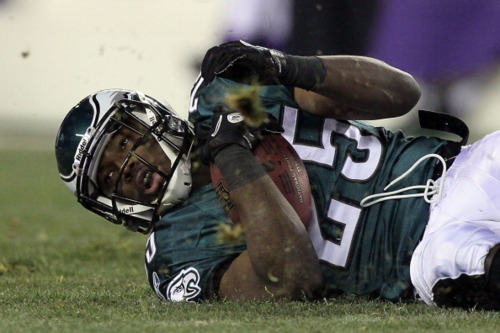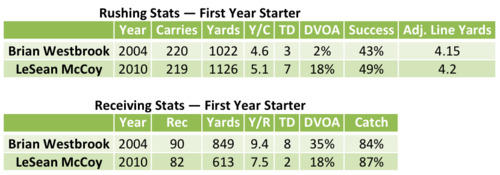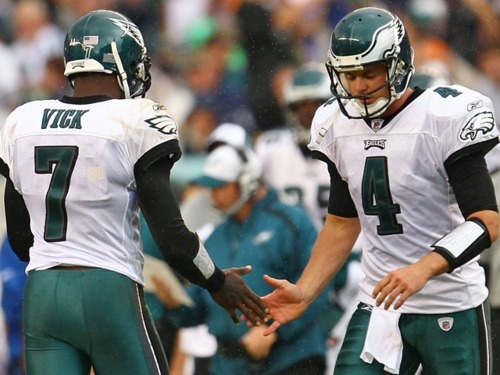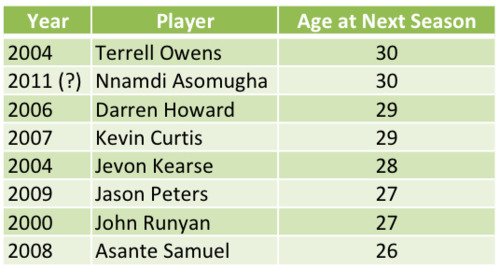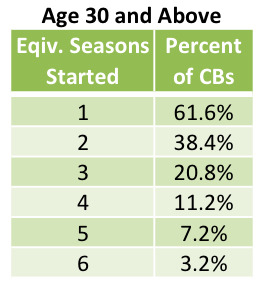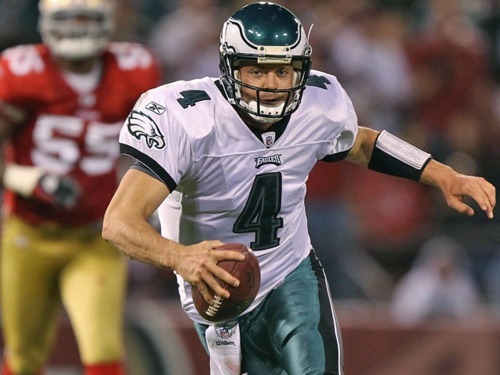
Fans have always wanted Andy Reid to run the ball more, but those calls were especially loud last season when LeSean McCoy was tearing up field in his first season as the starter. On Monday I examined the striking similarities and subtle differences between McCoy and former Eagle Brian Westbrook. Those statistics showed that McCoy may be an even better runner than Westbrook was at the same point in his career.
Yet even if McCoy is a better runner than Westbrook, he still may not be able to handle the bigger workload that many fans want him to take on. Last year he only averaged 13.7 carries per game, surpassing the 20 carry mark only once — in a week six win over Atlanta.
That’s not surprising. Westbrook himself only rushed more than 20 times twice in his first four and a half years in the NFL. And, to be fair, there just aren’t many running backs left in the NFL who can handle the ball all the time. In fact, only six players had over 20 carries per game in 2010, and none averaged higher than 22 carries.
But could McCoy handle a bigger workload than the one he was given last season? Let’s look at his number of carries and yards per carry in 2010 on a game by game basis:
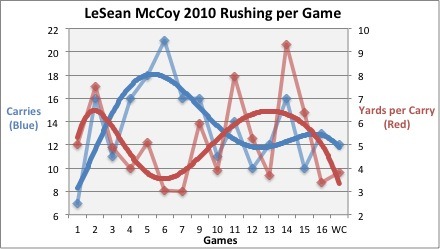
So the blue is carries, corresponding to the left axis, and red is yards per carry, measured on the right axis. Over the season, McCoy’s workload and effectiveness varied substantially.
In the first half of the season, McCoy was being used a lot; he had 16 or more carries six times in the first eight games. Yet his production was actually down. McCoy had only three games during that stretch in which he averaged above five yards per carry and also had his two least effective games, in weeks six and seven.
Then things changed. McCoy only carried the ball an average of 12 times a game after week nine, but posted some of his best performances. While his yards per carry was a respectable 4.8 in the first half, it rose to 5.5 over the last eight games.
We can also separate McCoy’s performance by carry:

Through the first 15 carries, McCoy was consistently great, averaging over five yards per carry. And while it’s a small sample size beyond that, McCoy experienced a significant drop off when the Eagles kept feeding him the ball last season.
Eagles fans will never stop calling for the team to run the ball more, and McCoy’s talent only makes that prospect even more tantalizing. But the truth is that McCoy might look much less special if he had to take on a huge workload. The Eagles may be better off limiting his touches, at least for now, and keeping McCoy as a fabulous second or third option — rather than the focus on offense.
Originally published at NBC Philadelphia. Photo from Getty.
